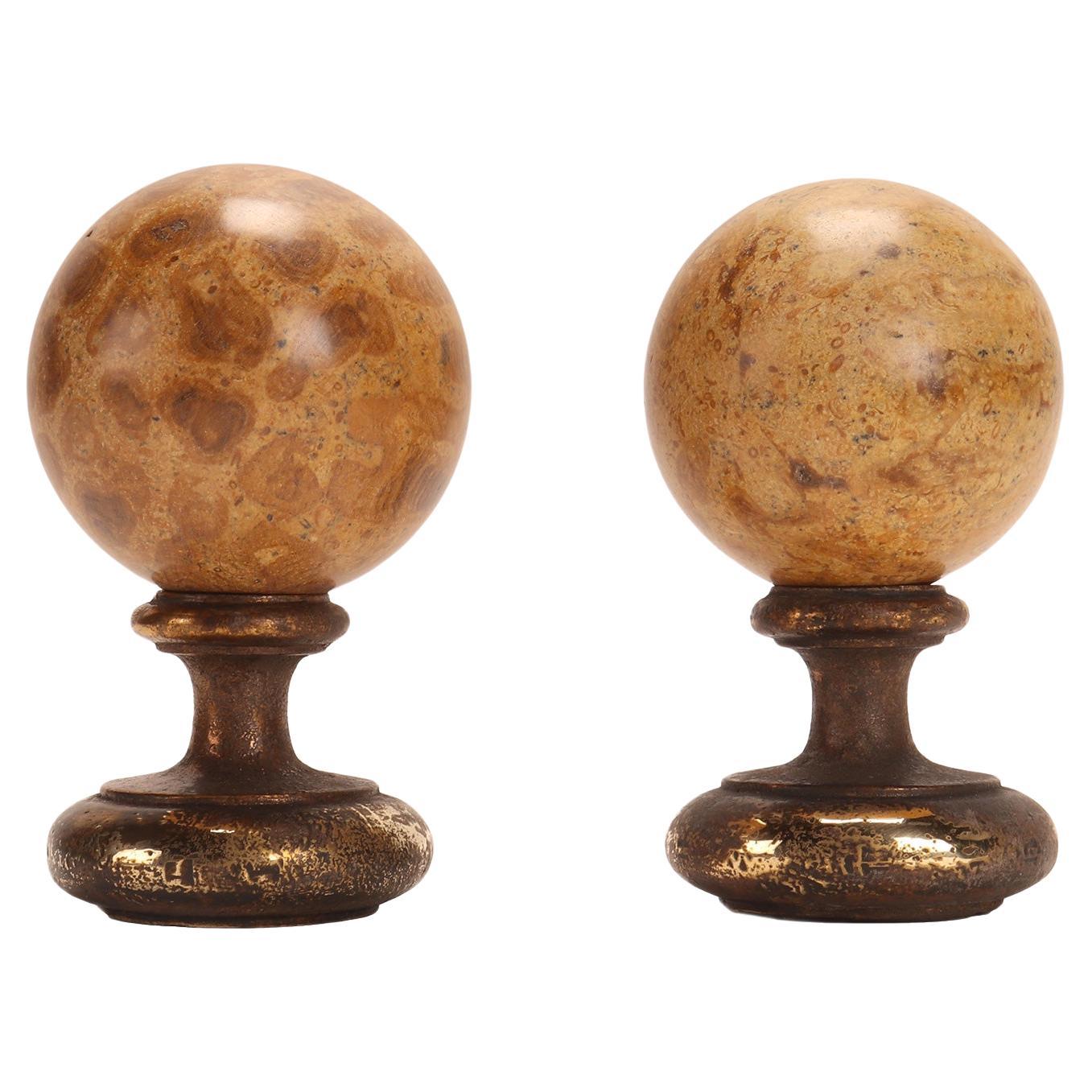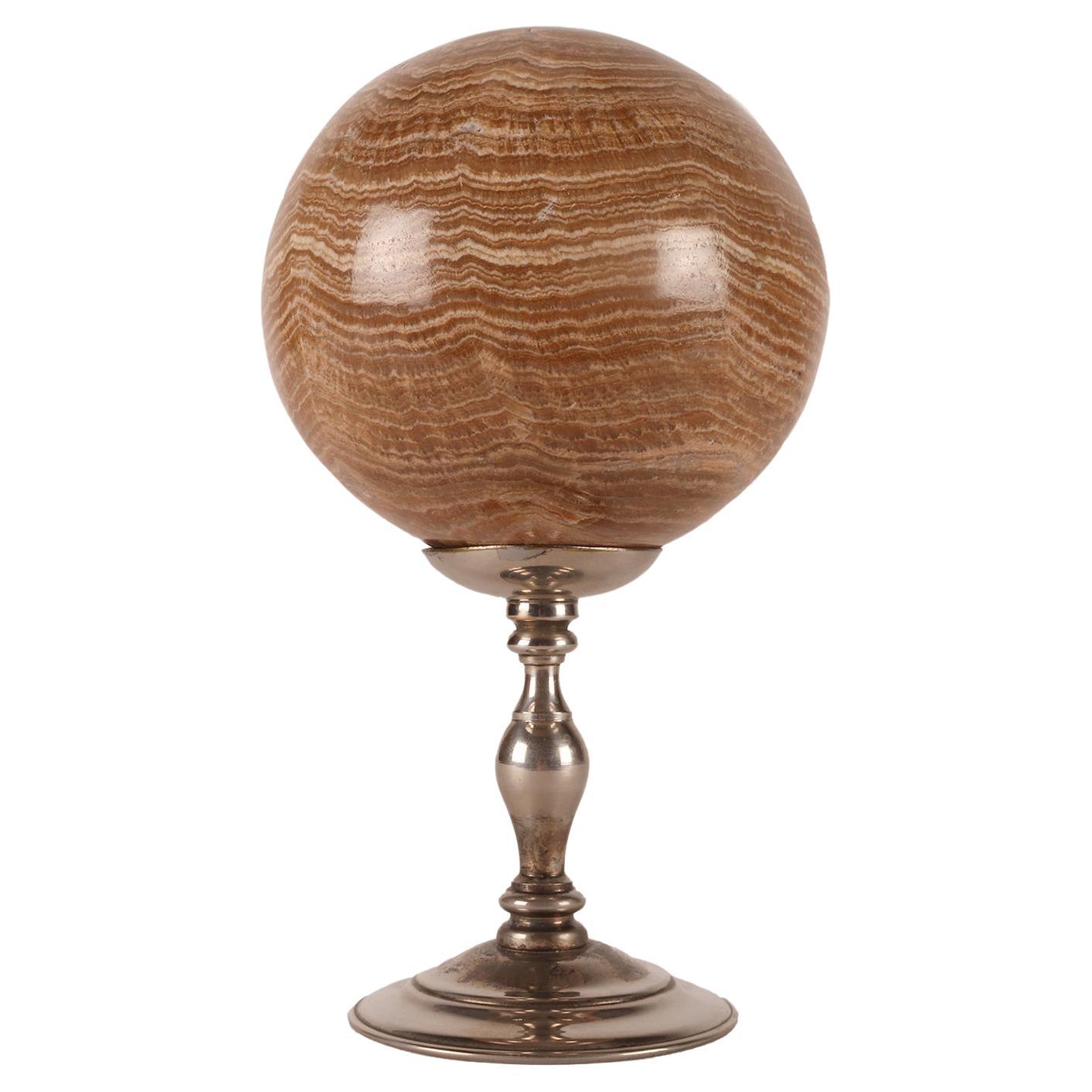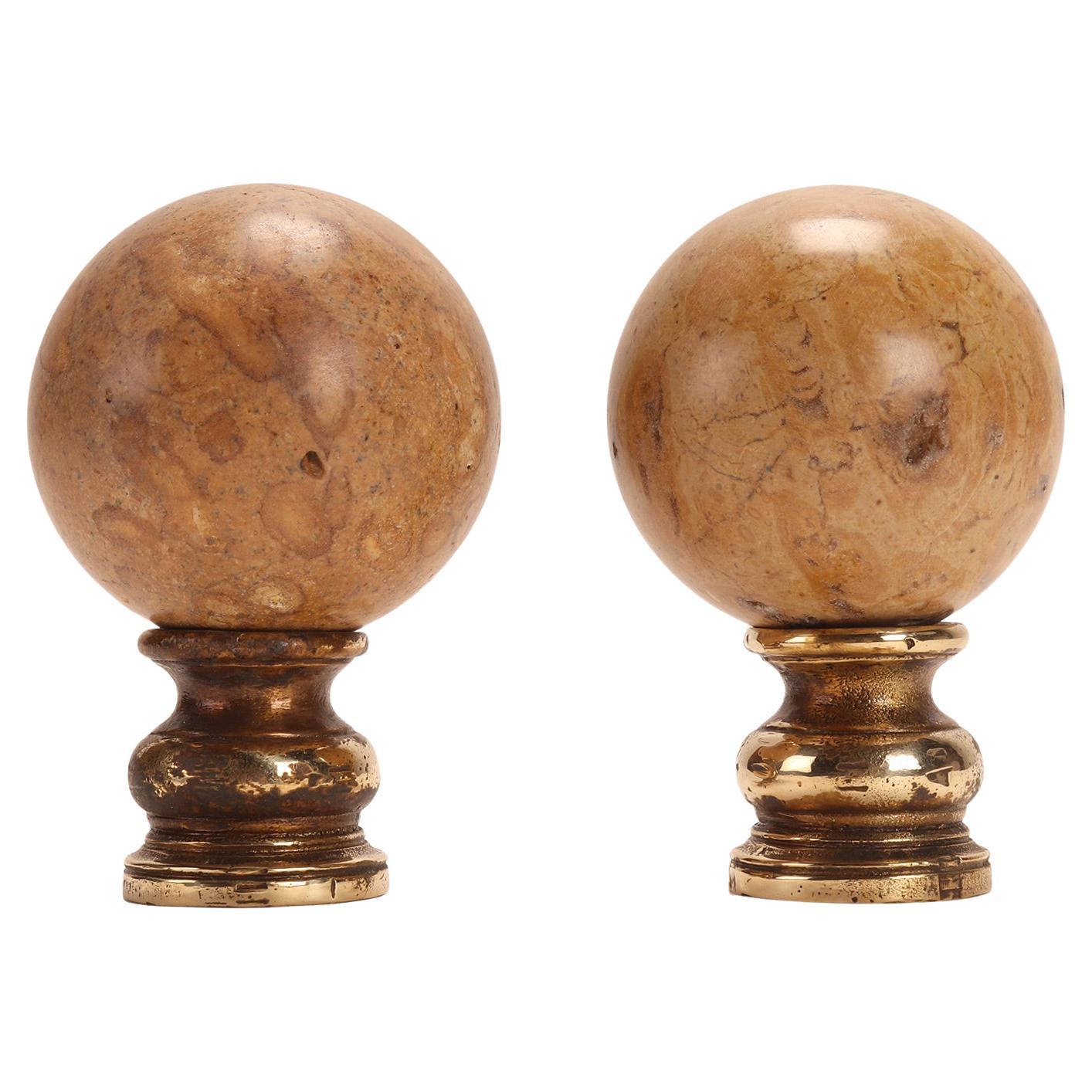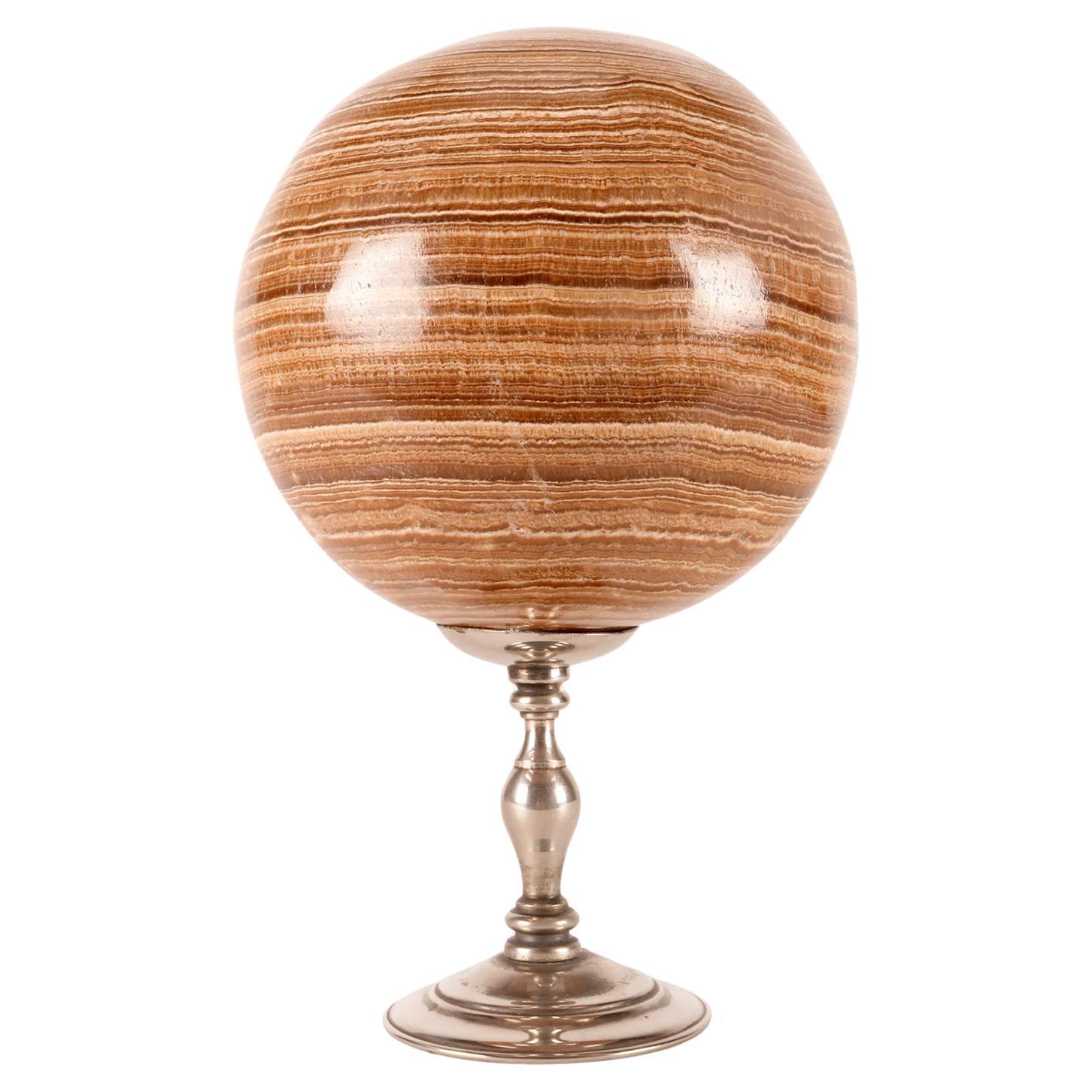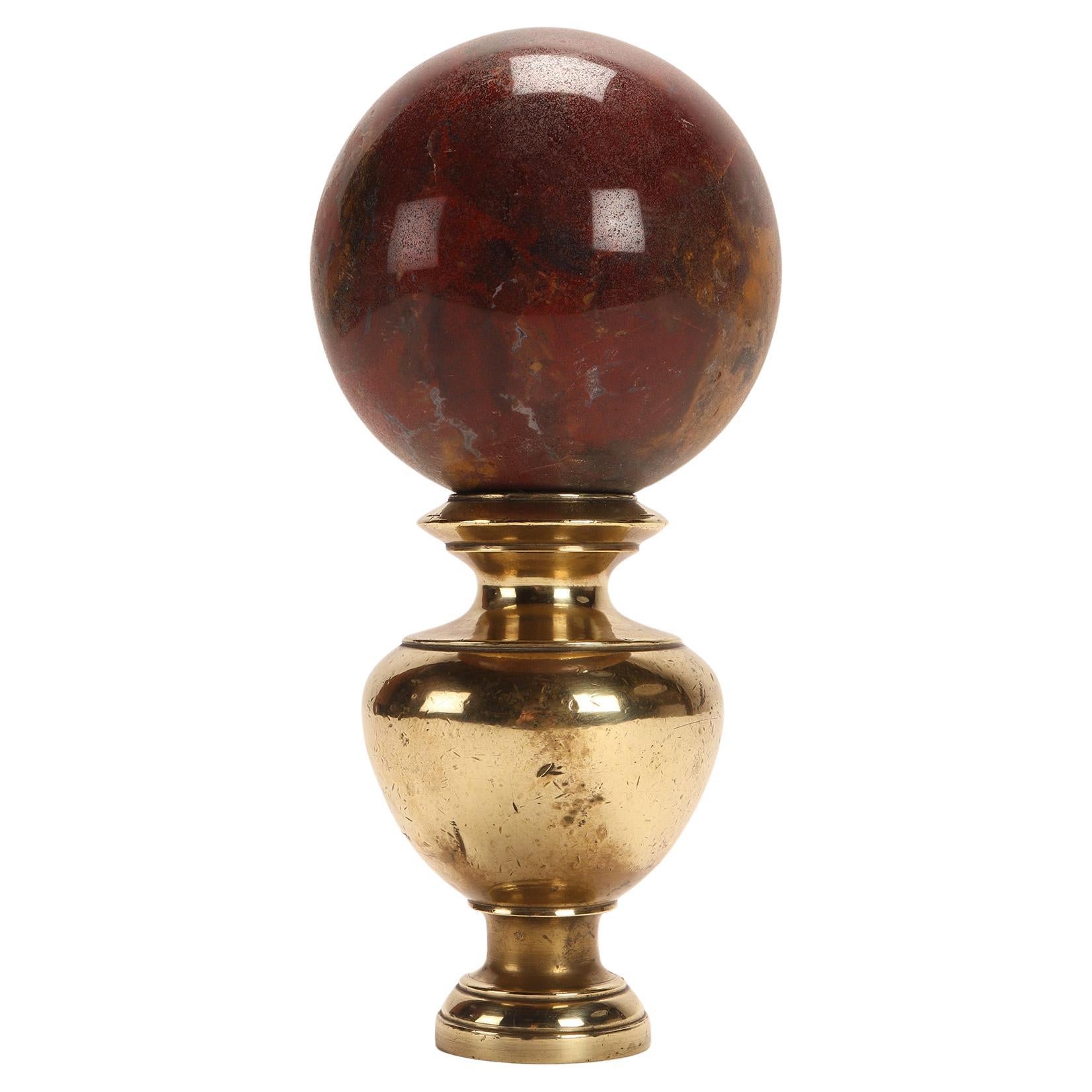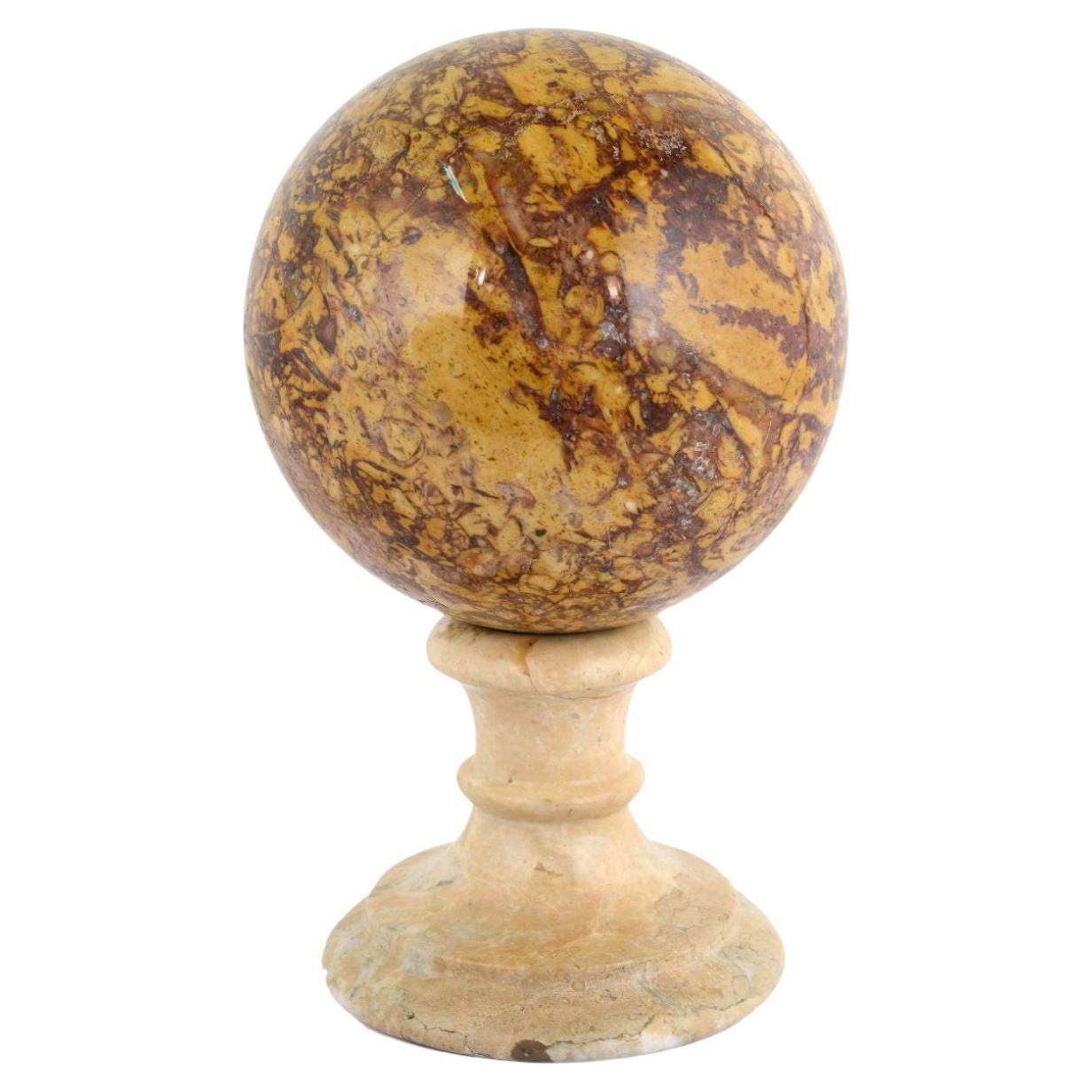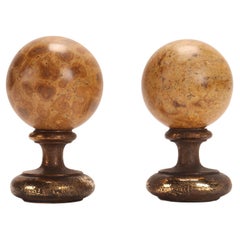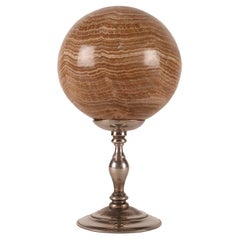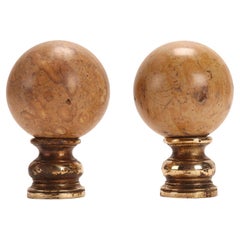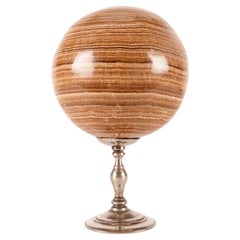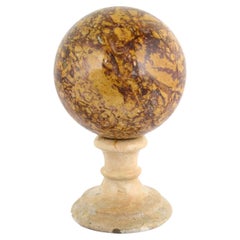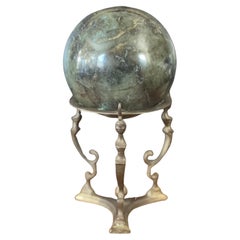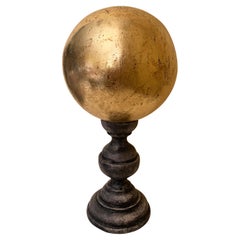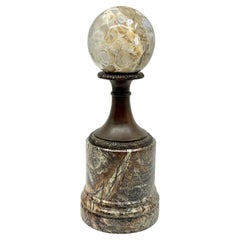Items Similar to A marine fossil “Mothership” sphere, Italy 1890.
Video Loading
Want more images or videos?
Request additional images or videos from the seller
1 of 10
A marine fossil “Mothership” sphere, Italy 1890.
$1,189.33
£877.90
€1,000
CA$1,641.76
A$1,829.03
CHF 959.54
MX$22,339.77
NOK 12,149.58
SEK 11,385.16
DKK 7,613.48
About the Item
A marine fossil “Mothership” sphere, resting on a base, made of brass. Italy circa 1890.
- Dimensions:Height: 6 in (15.24 cm)Width: 4 in (10.16 cm)Depth: 4 in (10.16 cm)
- Materials and Techniques:
- Place of Origin:
- Period:
- Date of Manufacture:1890
- Condition:Wear consistent with age and use.
- Seller Location:Milan, IT
- Reference Number:1stDibs: LU917145049772
About the Seller
5.0
Vetted Professional Seller
Every seller passes strict standards for authenticity and reliability
Established in 1991
1stDibs seller since 2011
247 sales on 1stDibs
Typical response time: 1 hour
- ShippingRetrieving quote...Shipping from: Milan, Italy
- Return Policy
Authenticity Guarantee
In the unlikely event there’s an issue with an item’s authenticity, contact us within 1 year for a full refund. DetailsMoney-Back Guarantee
If your item is not as described, is damaged in transit, or does not arrive, contact us within 7 days for a full refund. Details24-Hour Cancellation
You have a 24-hour grace period in which to reconsider your purchase, with no questions asked.Vetted Professional Sellers
Our world-class sellers must adhere to strict standards for service and quality, maintaining the integrity of our listings.Price-Match Guarantee
If you find that a seller listed the same item for a lower price elsewhere, we’ll match it.Trusted Global Delivery
Our best-in-class carrier network provides specialized shipping options worldwide, including custom delivery.More From This Seller
View AllA pair of marine fossil “Mothership” stones spheres, Italy 1890.
Located in Milan, IT
A pair of marine fossil “Mothership” spheres, resting on a base, made of brass. Italy circa 1890.
Category
Antique Late 19th Century Italian Natural Specimens
Materials
Stone, Brass
A sphere of Aragonite stone, Italy 1870.
Located in Milan, IT
A sphere of Aragonite stone, resting on a base, made of silver which has a cup-shaped stand with a wavy profile that opens upwards with a concave surface. Italy circa 1870.
Category
Antique Late 19th Century Italian Natural Specimens
Materials
Stone, Silver
A pair of marine fossil “Mothership” stones, Italy 1890.
Located in Milan, IT
A pair of marine fossil “Mothership” spheres, resting on a base, made of brass. Italy circa 1890.
Category
Antique Late 19th Century Italian Natural Specimens
Materials
Stone, Brass
A large sphere of Aragonite stone, Italy 1870.
Located in Milan, IT
A large sphere of Aragonite stone, resting on a base, made of silver which has a cup-shaped stand with a wavy profile that opens upwards with a concave surface. Italy circa 1870.
Category
Antique Late 19th Century Italian Natural Specimens
Materials
Stone, Silver
A sphere of red jasper, mounted on a brass base, Italy 1890.
Located in Milan, IT
A sphere of red jasper resting on a base, made of brass that has a vase-shaped support with a wavy profile that opens upwards with a concave top. Italy end of 19th century.
Category
Antique Late 19th Century Italian Natural Specimens
Materials
Stone, Brass
A sphere of red jasper, mounted on a brass base, Italy 1890.
Located in Milan, IT
A sphere of red jasper resting on a base, made of brass that has a vase-shaped support with a wavy profile that opens upwards with a concave top. Italy end of 19th century.
Category
Antique Late 19th Century Italian Natural Specimens
Materials
Stone, Brass
You May Also Like
Galileo marble sphere paperweight
Located in Firenze, FI
Looking for a way to add some style and sophistication to your home? Our marble sphere is the perfect choice! With its chic design and high-quality const...
Category
2010s Italian Figurative Sculptures
Materials
Marble, Brass
$1,247 / item
Solid Marble Decorative Sphere on Bronze Base
Located in San Diego, CA
Beautiful solid green marble decorative sphere on bronze base, circa 1970s. The piece is in very good condition with no chips or cracks; it has a nic...
Category
Late 20th Century North American Mid-Century Modern Abstract Sculptures
Materials
Marble, Bronze
$260 Sale Price
20% Off
Late 20th Century Golden Sphere Decorative Sculpture
Located in LA CELLERA DE TER, ES
Golden wooden sphere sculpture formed with a bright golden sphere at the top supported with a gray wooden base. Baroque style from late 20th century.
*The item is sold as a unique...
Category
Late 20th Century Spanish Baroque Figurative Sculptures
Materials
Gold Leaf
Theodore and Alexander Neo Classical Specimen Marble Sphere Bronze Mounted
By Theodore Alexander
Located in Palm Springs, CA
A nice high quality Neo classical grand tour homage by Theodore and Alexander. It features a specimen marble sphere on a mounted bronze and marble base. It is cast of bronze and moun...
Category
1990s Indian Mounted Objects
Materials
Marble, Bronze
Marble Ball On Stand
Located in Tampa, FL
A turn of the century, Italian marble ball on a small black wooden base. The marble is polished and it is in great condition.
Category
Antique Early 1900s Italian Natural Specimens
Materials
Marble
Large sphere on pedestal in fractal resin by Pierre Giraudon, France, circa 1970
By Pierre Giraudon
Located in Paris, FR
Large sphere on a pedestal in fractal resine. The pedestal is champagne-colored, the sphere slightly pink. Unique piece.
Biography : Pierre Giraudon, France (1923-2012)
Pierre Gira...
Category
Vintage 1970s French Abstract Sculptures
Materials
Resin
More Ways To Browse
Used Marine Furniture
Stone Sphere
Antique Sphere
Antique Marine Furniture
Butterfly Sculpture In Glass Dome
Clear Quartz Freeform
Coral Faux Sculpture
Horny Coral
Large South Pacific Tridacna Gigas Clam Shell
Mesh Cactus
Skull Beetle
Deconstructed Lobster
Giant Clam Pearl
Heteromorph Ammonite
Inuit Whale Bone
Martian Meteorites
Scrimshaw Turtle Shell
Seahorse Candleholder
